Efficient Simulation of Sandbody Architecture Using Probability Simulation—A Case Study in Cretaceous Condensate Gas Reservoir in Yakela Area, Tahe Oilfield, China
Abstract
:1. Introduction
2. Geological Background
3. Methodology
3.1. Reservoir Data Preparation
3.2. Building Sandbody Architectural Element Database
3.2.1. Modern Sand Bars
3.2.2. Similar Reservoir—Triassic Fluvial Reservoir of Block 1 in Tahe Oilfield
3.2.3. Outcrop Sections
3.3. Monte-Carlo Simulation
4. Results
4.1. Architectural Elements Identification in Wells
4.2. Vertical Distributional Characteristics of Architectural Elements
4.2.1. Thickness Portions of Architectural Elements
4.2.2. Vertical Contact Relationships and Their Portions
4.3. Probability Simulation of Sandbody Dimensions
4.4. Simulated Reservoir Distribution Characteristics
4.4.1. Lateral Extension
4.4.2. Planar Distribution
5. Discussion
5.1. Validation of Sandstone Architecture Probability Simulation
5.2. Applicability of Reservoir Distribution Probability Simulation
5.3. Limitation of Probability Simulation
6. Conclusions
- (1)
- Well data in Yakela area provides the basic parameters of architectural elements and their contact relationships, based on which we obtained the statistical frequency of vertical developments of sandbodies and then used them as a testing dataset (variables) in the simulation of sandbody architecture.
- (2)
- We measured the sandbody dimensions of a modern sandbar, a similar reservoir, and outcrops and formed a comprehensive database. This database serves as a training dataset in the simulation of sandbody architecture.
- (3)
- We simulated the horizontal development probability of sandbodies in Yakela area from the testing dataset and built the reservoir model to locate favorable reservoir targets. This model fits well with the later seismic interpreted reservoir distribution, suggesting that our simulation is efficient and reliable.
- (4)
- It is of great significance to build a reservoir database with detailed dimensions and parameters of reservoir architectural elements (specific sandbodies). The larger the database is, the more powerfully those new technologies such as big data and deep learning can perform.
Author Contributions
Funding
Data Availability Statement
Conflicts of Interest
References
- Pittman, E.D. Porosity, diagenesis and productive capability of sandstone reservoirs. In Aspects of Diagenesis; Schoue, P.A., Schluger, P.R., Eds.; SEPM Special Publication: Tulsa, OK, USA, 1979; Volume 26, pp. 159–173. [Google Scholar]
- Galloway, W.E. Reservoir facies architecture of microtidal barrier systems. AAPG Bull. 1986, 70, 787–808. [Google Scholar]
- Liu, K.; Boult, P.; Painter, S.; Paterson, L. Outcrop analog for sandy braided stream reservoirs: Permeability patterns in the Triassic Hawkesbury Sandstone, Sydney Basin, Australia. AAPG Bull. 1996, 80, 1850–1865. [Google Scholar]
- Karssenberg, D.; Tornqvist, T.E.; Bridge, J.S. Conditioning a process-based model of sedimentary architecture to well data. J. Sediment. Res. 2001, 71, 868–879. [Google Scholar] [CrossRef]
- Miall, A.D. Architecture and sequence stratigraphy of Pleistocene fluvial systems in the Malay Basin, based on seismic time-slice analysis. AAPG Bull. 2002, 86, 1201–1216. [Google Scholar]
- Miall, A.D. Reconstructing the architecture and sequence stratigraphy of the preserved fluvial record as a tool for reservoir development: A reality check. AAPG Bull. 2006, 90, 989–1002. [Google Scholar] [CrossRef]
- Hampson, G.J.; Sixsmith, P.J.; Johnson, H.D. A sedimentological approach to refining reservoir architecture in a mature hydrocarbon province: The Brent Province, UK North Sea. Mar. Pet. Geol. 2004, 21, 457–484. [Google Scholar] [CrossRef]
- Johannessen, P.N.; Nielsen, L.H. Architecture of an upper Jurassic barrier island sandstone reservoir, Danish Central Graben: Implications of a holocene-recent analogue from the Wadden Sea. Pet. Geol. Conf. 2010, 7, 145–155. [Google Scholar] [CrossRef]
- Siddiqui, N.A.; Ramkumar, M.; Rahman, A.H.A. High resolution facies architecture and digital outcrop modeling of the Sandakan formation sandstone reservoir, Borneo: Implications for reservoir characterization and flow simulation. Geosci. Front. 2019, 10, 957–971. [Google Scholar] [CrossRef]
- Galloway, W.E. Sediments and stratigraphic framework of the copper river fan-delta, Alaska. J. Sediment. Petrol. 1976, 46, 725–737. [Google Scholar]
- Miall, A.D. Reservoir heterogeneities in fluvial sandstones—Lessons from outcrop studies. AAPG Bull. 1988, 72, 682–697. [Google Scholar]
- Smith, R.D.A. Reservoir architecture of syn-rift lacustrine turbidite systems, early cretaceous, offshore south Gabon. In Geological Society Special Publication; Lambiase, J.J., Ed.; Geological Society Publishing House: Bath, UK, 1995; pp. 197–210. [Google Scholar]
- Richards, M.; Bowman, M. Submarine fans and related depositional systems ii: Variability in reservoir architecture and wireline log character. Mar. Pet. Geol. 1998, 15, 821–839. [Google Scholar] [CrossRef]
- Bruhn, C.H.L. Reservoir architecture of deep-lacustrine sandstones from the Early Cretaceous Recôncavo Rift Basin, Brazil. AAPG Bull. 1999, 83, 1502–1525. [Google Scholar]
- Clark, M.S.; Klonsky, L.F.; Tucker, K.E. Geologic study and multiple 3-D surveys give clues to complex reservoir architecture of giant Coalinga oil field, San Joaquin Valley, California. Lead Edge 2001, 20, 744–751. [Google Scholar] [CrossRef]
- Hornung, J.; Aigner, T. Reservoir architecture in a terminal alluvial plain: An outcrop analogue study (upper Triassic, southern Germany) part 1: Sedimentology and petrophysics. J. Pet. Geol. 2002, 25, 3–30. [Google Scholar] [CrossRef]
- Hampson, G.J.; Rodriguez, A.B.; Storms, J.E.A.; Johnson, H.D.; Meyer, C.T. Geomorphology and high-resolution stratigraphy of progradational wave-dominated shoreline deposits: Impact on reservoir-scale facies architecture. In Recent Advances in Models of Siliciclastic Shallow-Marine Stratigraphy; Hampson, G.J., Steel, R.J., Burgess, P.M., Dalrymple, R.W., Eds.; SEPM Special Publication: Tulsa, OK, USA, 2008; Volume 90, pp. 117–142. [Google Scholar]
- Sixsmith, P.J.; Hampson, G.J.; Gupta, S.; Johnson, H.D.; Fofana, J.F. Facies architecture of a net transgressive sandstone reservoir analog: The Cretaceous Hosta Tongue, New Mexico. AAPG Bull. 2008, 92, 513–547. [Google Scholar] [CrossRef]
- Sech, R.P.; Jackson, M.D.; Hampson, G.J. Three-dimensional modeling of a shoreface-shelf parasequence reservoir analog: Part 1. Surface-based modeling to capture high-resolution facies architecture. AAPG Bull. 2009, 93, 1155–1181. [Google Scholar] [CrossRef]
- Pyles, D.R.; Syvitski, J.P.M.; Slatt, R.M. Defining the concept of stratigraphic grade and applying it to stratal (reservoir) architecture and evolution of the slope-to-basin profile: An outcrop perspective. Mar. Pet. Geol. 2011, 28, 675–697. [Google Scholar] [CrossRef]
- Onyenanu, G.I.; Jacquemyn, C.E.M.M.; Graham, G.H. Geometry, distribution and fill of erosional scours in a heterolithic, distal lower shoreface sandstone reservoir analogue: Grassy Member, Blackhawk Formation, Book Cliffs, Utah, USA. Sedimentology 2018, 65, 1731–1760. [Google Scholar] [CrossRef]
- Mulhern, J.S.; Johnson, C.L.; Martin, J.M. Modern to Ancient Barrier Island Dimensional Comparisons: Implications for Analog Selection and Paleomorphodynamics. Front. Earth Sci. 2019, 7, 109. [Google Scholar] [CrossRef]
- Johnson, C.L.; Graham, S.A. Sedimentology and Reservoir Architecture of a Synrift Lacustrine Delta, Southeastern Mongolia. J. Sediment. Res. 2004, 74, 770–785. [Google Scholar] [CrossRef]
- Ambrose, W.A.; Hentz, T.F.; Bonnaffé, F. Sequence-stratigraphic controls on complex reservoir architecture of highstand fluvial-dominated deltaic and lowstand valley-fill deposits in the Upper Cretaceous (Cenomanian) Woodbine Group, East Texas field: Regional and local perspectives. AAPG Bull. 2009, 93, 231–269. [Google Scholar] [CrossRef]
- Deveugle, P.E.K.; Jackson, M.D.; Hampson, G.J. Characterization of stratigraphic architecture and its impact on fluid flow in a fluvial-dominated deltaic reservoir analog: Upper Cretaceous Ferron Sandstone Member, Utah. AAPG Bull. 2011, 95, 693–727. [Google Scholar] [CrossRef]
- Hu, W. Reservoir features and controlling factors of Yageliemu Formation in Yakela, Tarim Basin, China. J. Chengdu Univ. Technol. (Sci. Technol. Ed.) 2011, 38, 385–393, (In Chinese with English Abstract). [Google Scholar]
- Walther, J. Einleitung in die Geologie als historische Wissenschaft. In Lithogenesis der Gegenwart; G. Fischer, Bd.: Jena, Germany, 1894; Volume 3, pp. 535–1055. [Google Scholar]
- Middleton, G. Johannes Walther’s Law of Correlation of Facies. Geol. Soc. Am. Bull. 1973, 38, 979–988. [Google Scholar] [CrossRef]
- Zeng, L.; Wang, H.; Gong, L.; Liu, M. Impacts of the tectonic stress field on natural gas migration and accumulation: A case study of the Kuqa Depression in the Tarim Basin, China. Mar. Pet. Geol. 2010, 27, 1616–1627. [Google Scholar] [CrossRef]
- Lai, J.; Wang, G.; Chai, Y.; Xin, Y.; Wu, Q.; Zhang, X.; Sun, Y. Deep burial diagenesis and reservoir quality evolution of high-temperature, high-pressure sandstones: Examples from Lower Cretaceous Bashijiqike Formation in Keshen area, Kuqa depression, Tarim basin of China. AAPG Bull. 2017, 101, 829–862. [Google Scholar] [CrossRef]
- Yao, Z.; He, G.; Li, C.F.; Dong, C. Sill geometry and emplacement controlled by a major disconformity in the Tarim Basin, China. Earth Planet. Sci. Lett. 2018, 501, 37–45. [Google Scholar] [CrossRef]
- Wang, T.F.; Jin, Z.; Li, H.; Liu, D.; Cheng, R.; Shi, S.; Wang, J. Processes and causes of Phanerozoic tectonic evolution of the western Tarim Basin, northwest China. Pet. Sci. 2020, 17, 279–291. [Google Scholar] [CrossRef]
- Liang, L.; Gao, Y.; Zhang, H.; Shao, G.; Yin, T.; Ding, H. Sedimentary Microfacies Analyses of Yageliemu Formation of Yakela Condensate Gas Field in Southern Tianshan Area of Tarim Basin. Xinjiang Geol. 2013, 31, 66–71, (In Chinese with English Abstract). [Google Scholar]
- Kroese, D.P.; Taimre, T.; Botev, Z.I. Handbook of Monte Carlo Methods. In Wiley Series in Probability and Statistics; John Wiley & Sons: New York, NY, USA, 2011. [Google Scholar]
- Murtha, J.A. Monte Carlo simulation: Its status and future. J. Pet. Technol. 1997, 49, 361–373. [Google Scholar] [CrossRef]
- Cortazar, G.; Schwartz, E.S. Monte Carlo evaluation model of an undeveloped oil field. J. Energy Financ. Dev. 1998, 3, 73–84. [Google Scholar] [CrossRef]
- Ungerer, P.; Tavitian, B.; Boutin, A. Applications of Molecular Simulation in the Oil and Gas Industry: Monte Carlo Methods; Editions Technip: Houston, TX, USA, 2005. [Google Scholar]
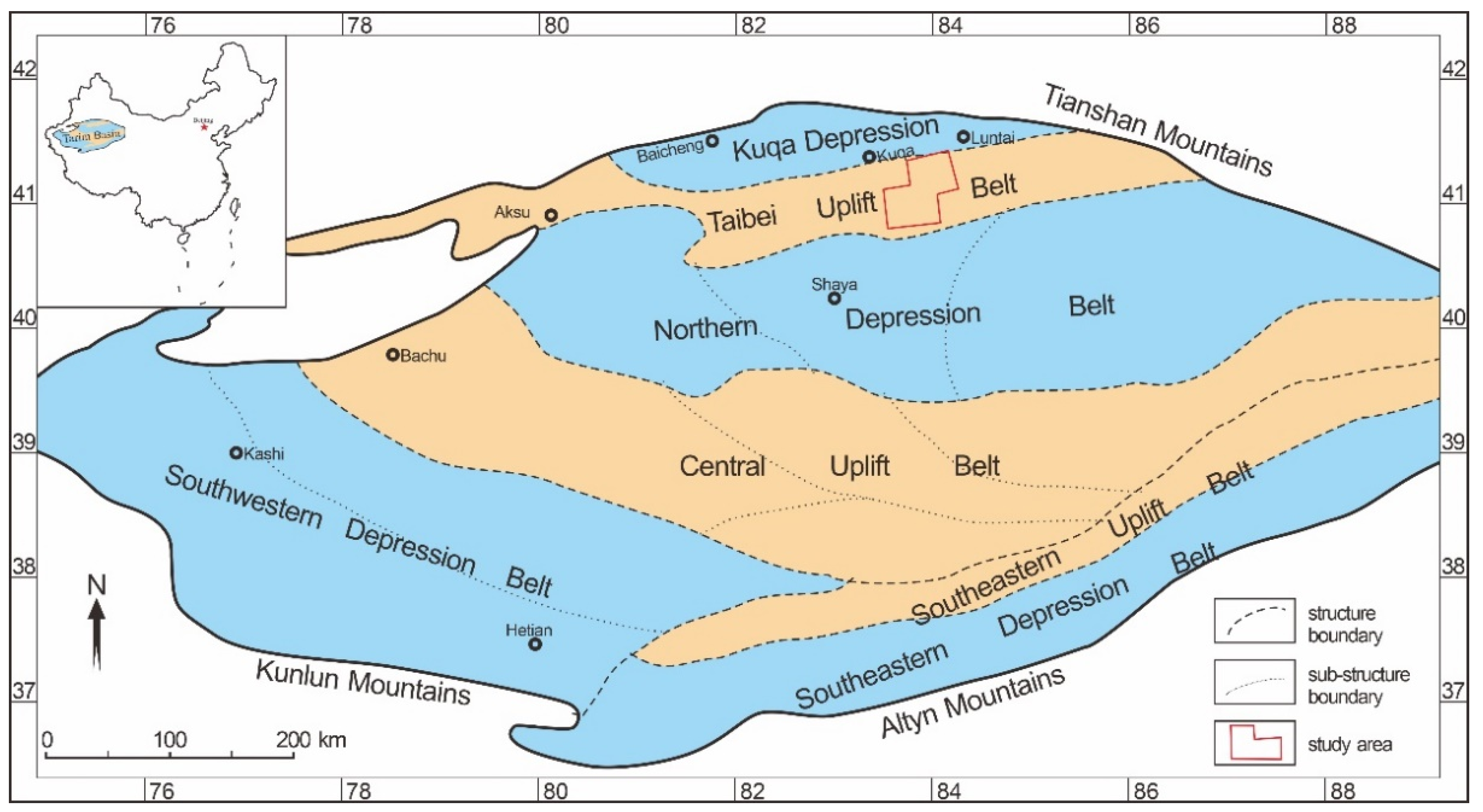
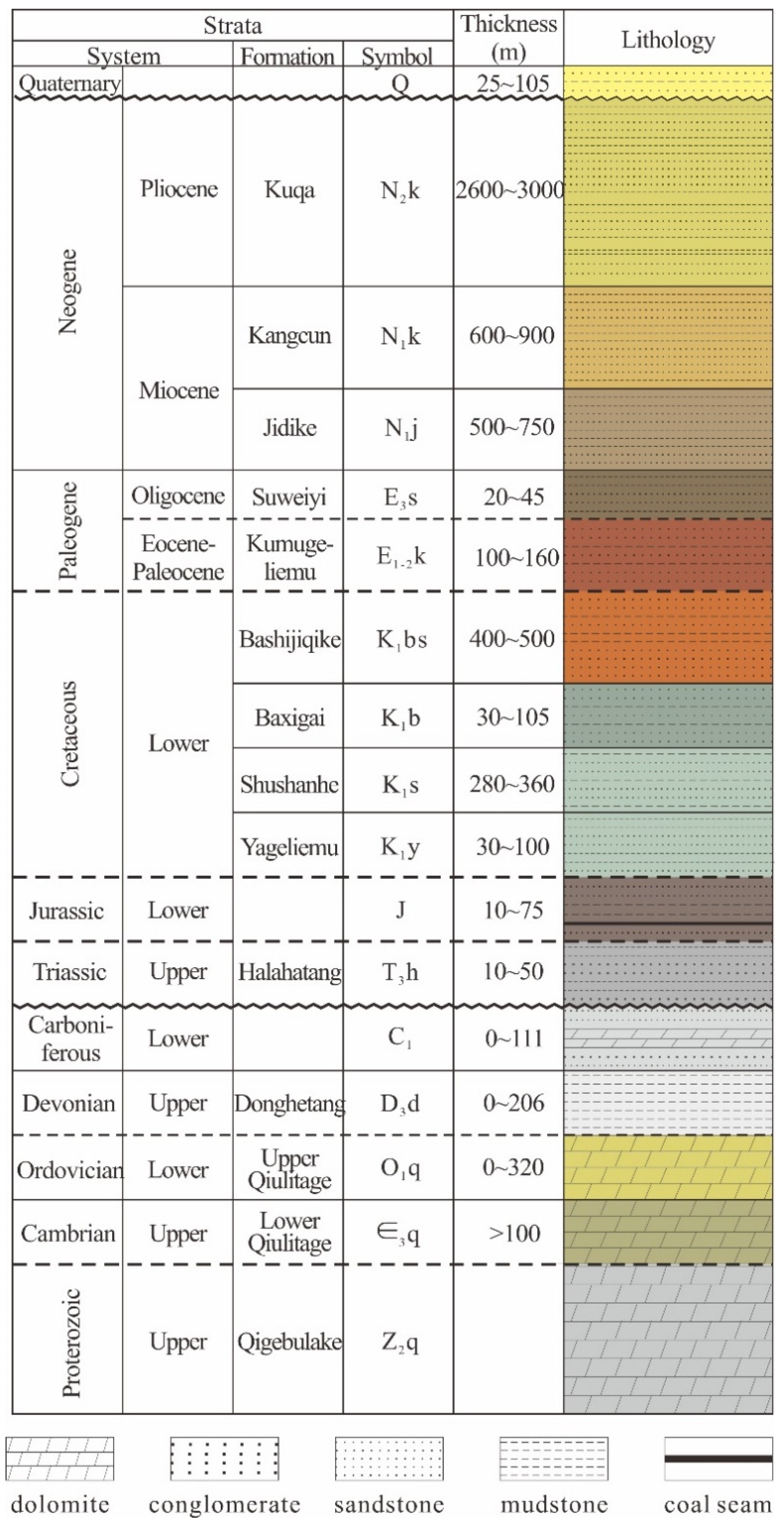

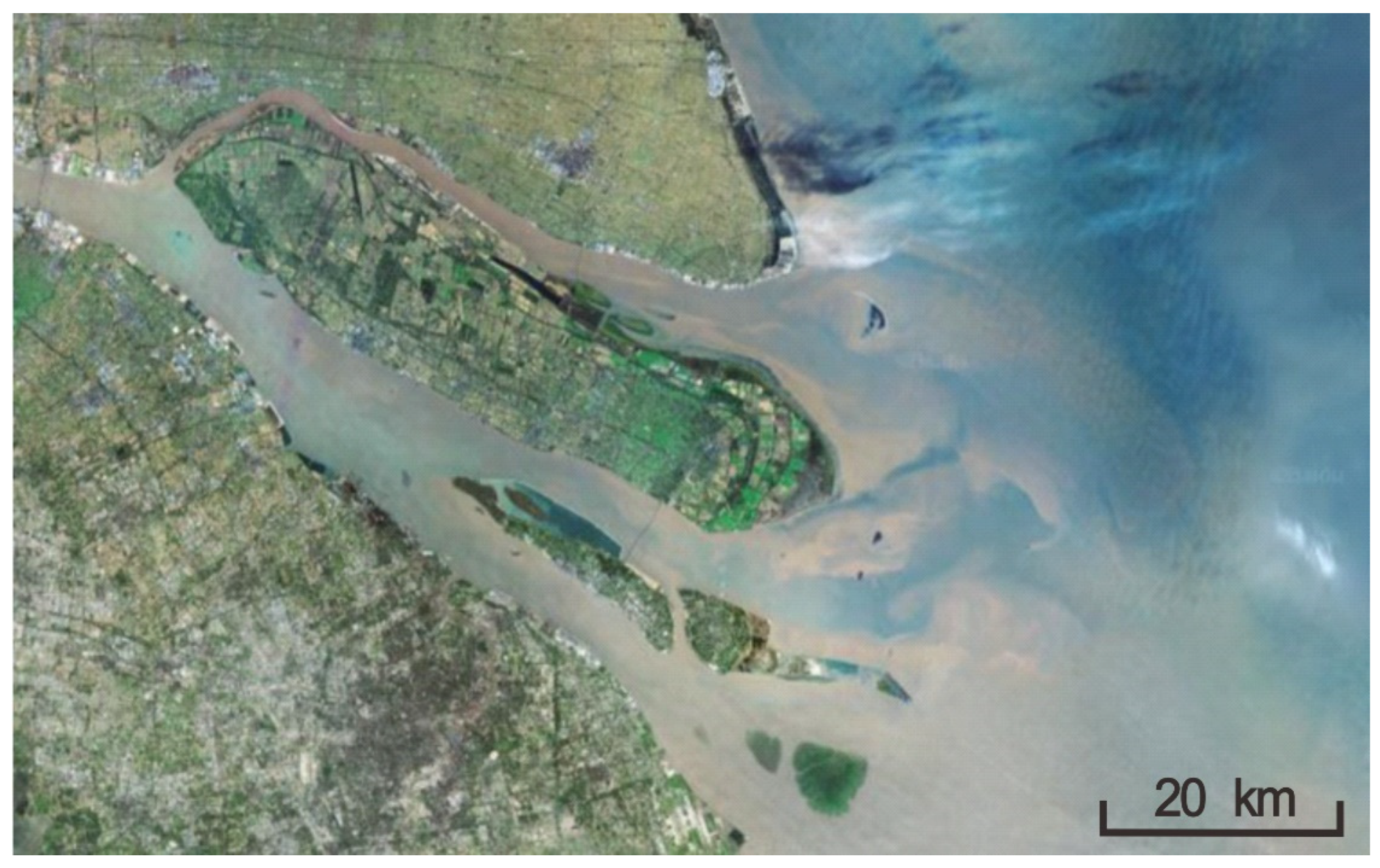
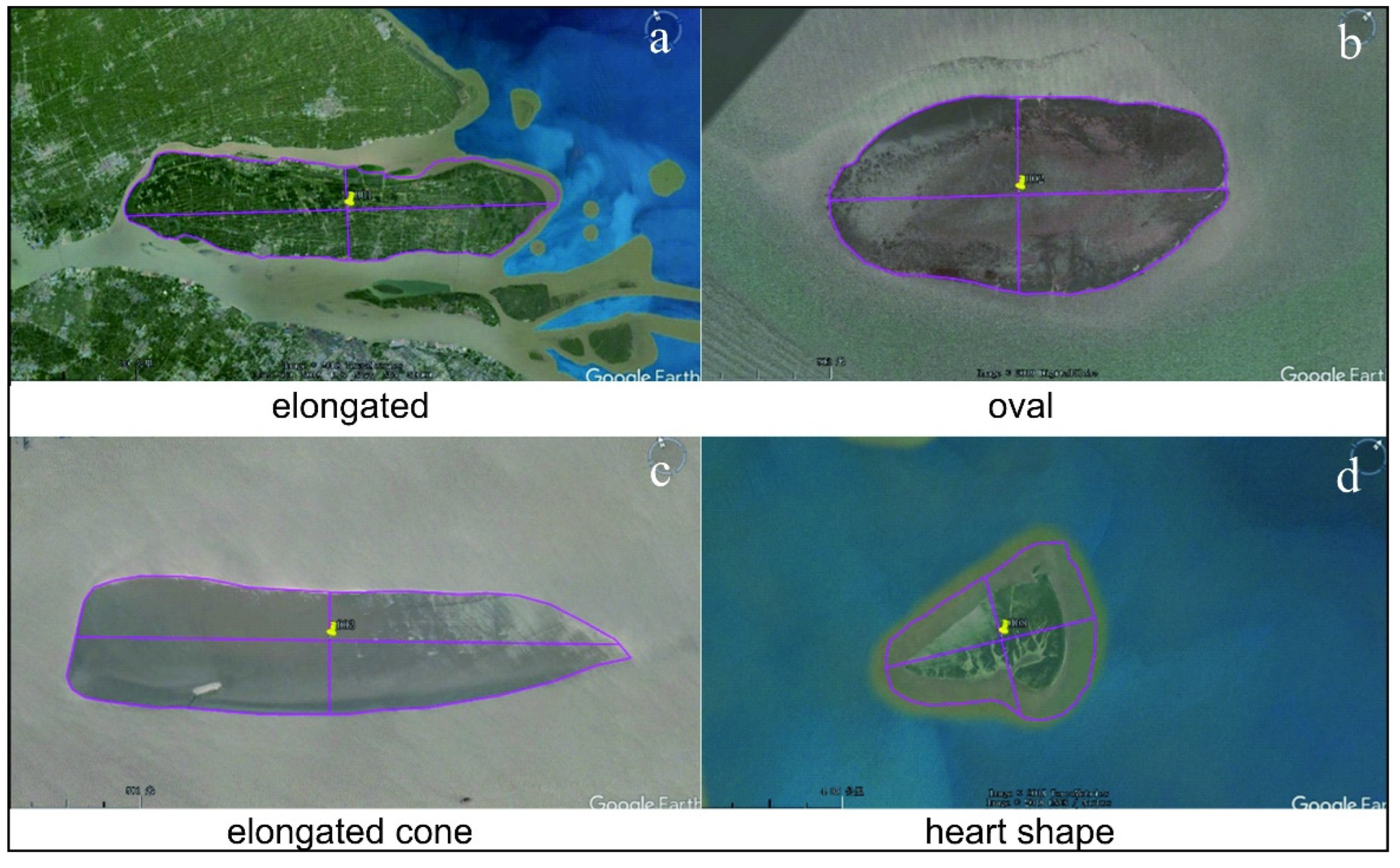
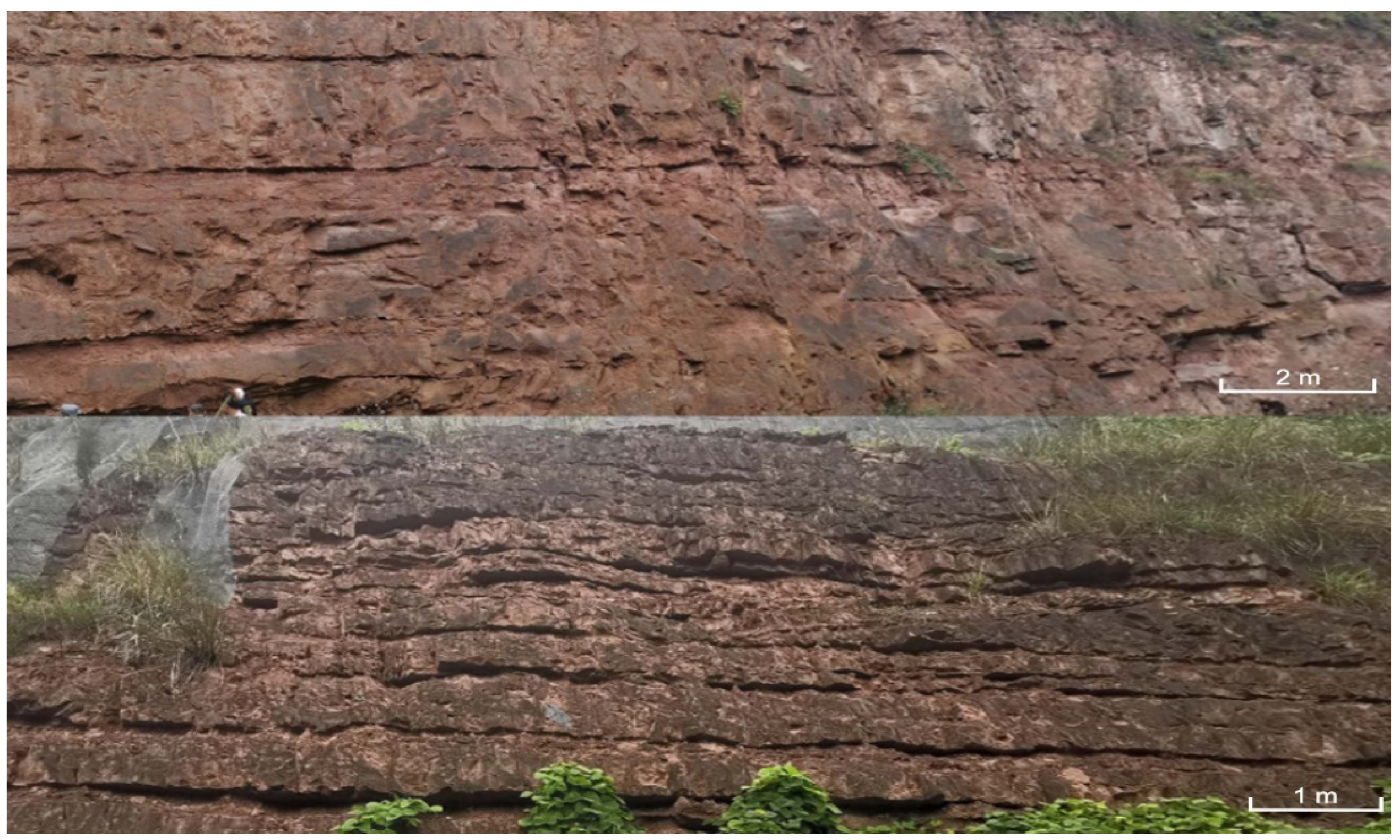
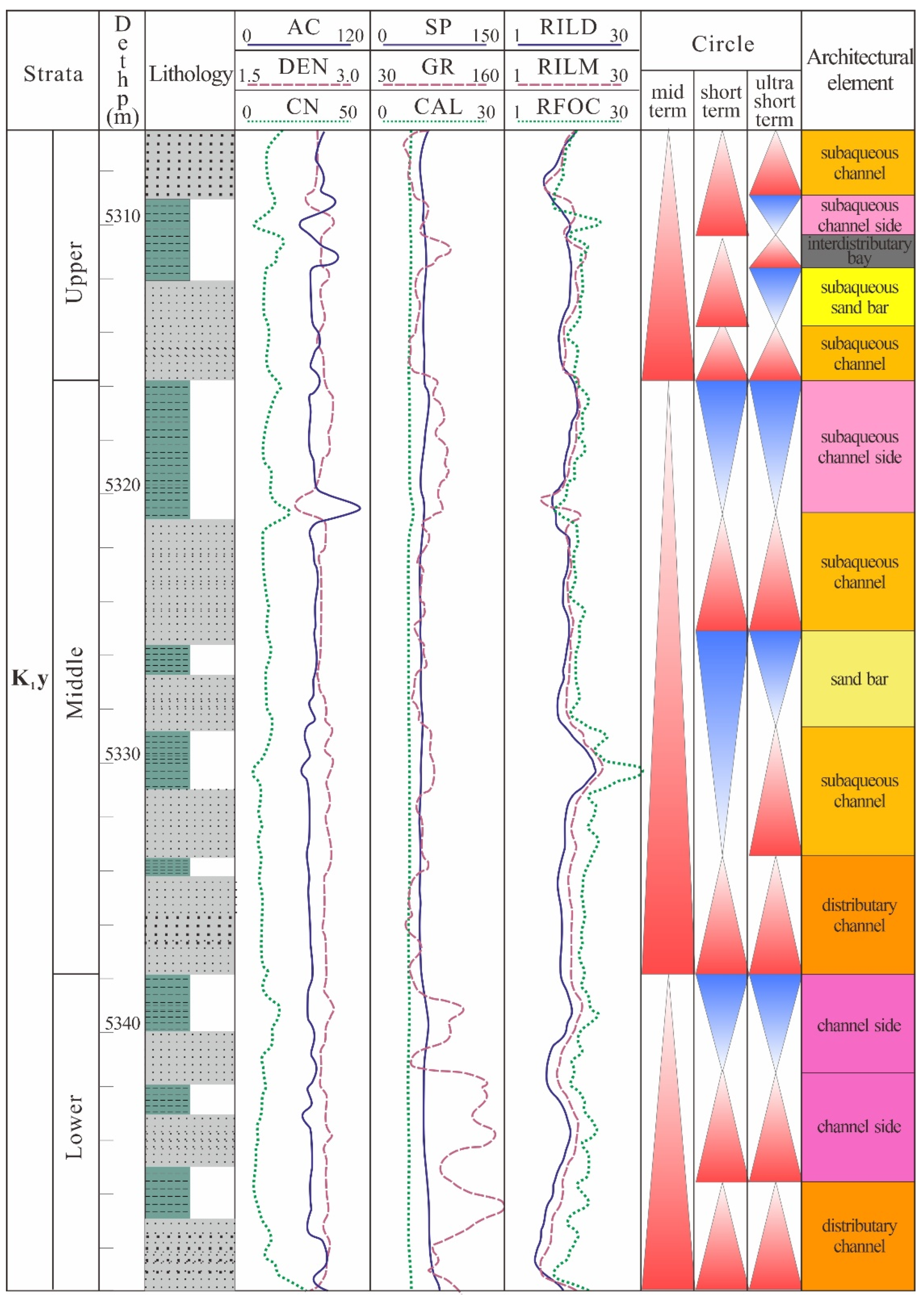
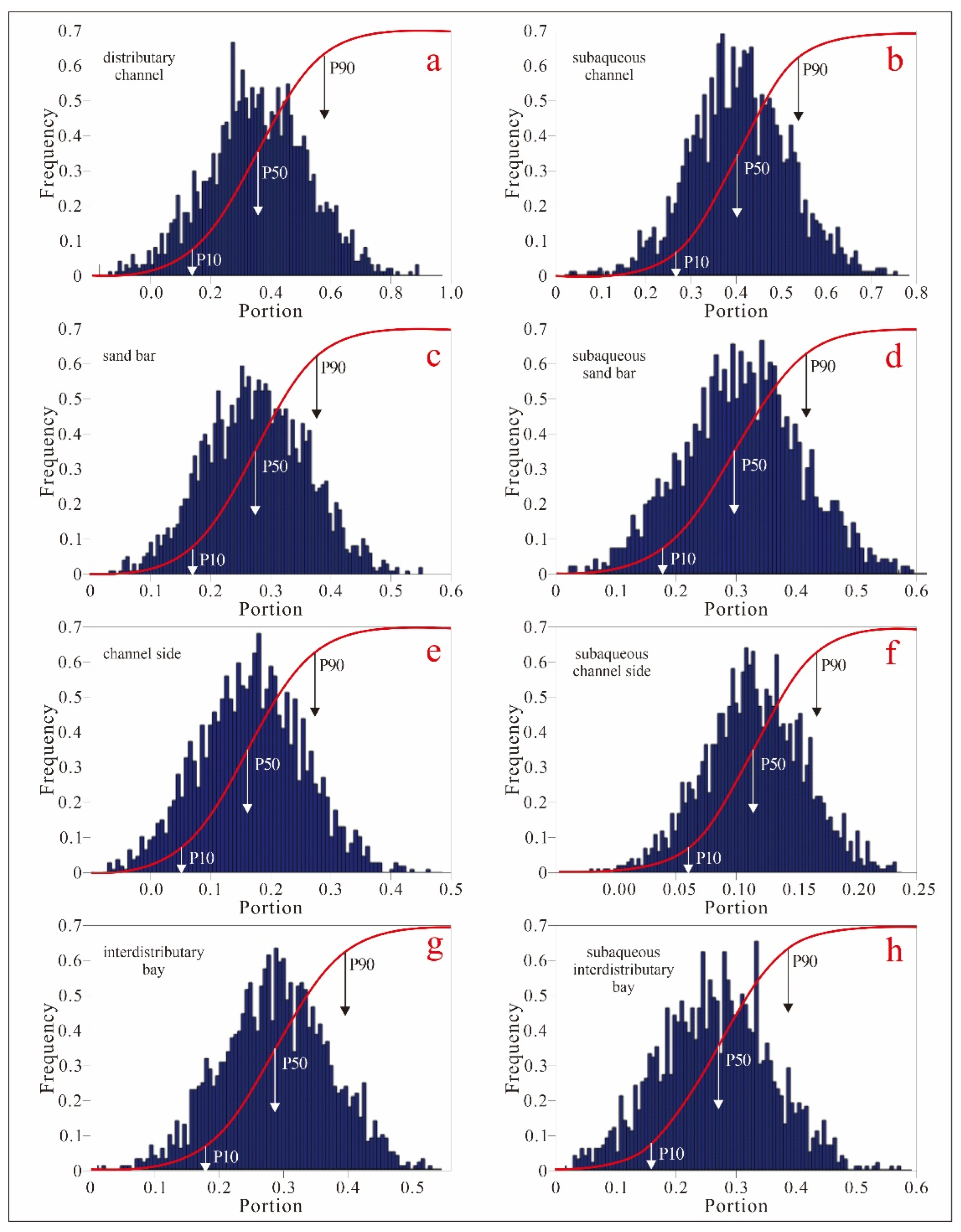
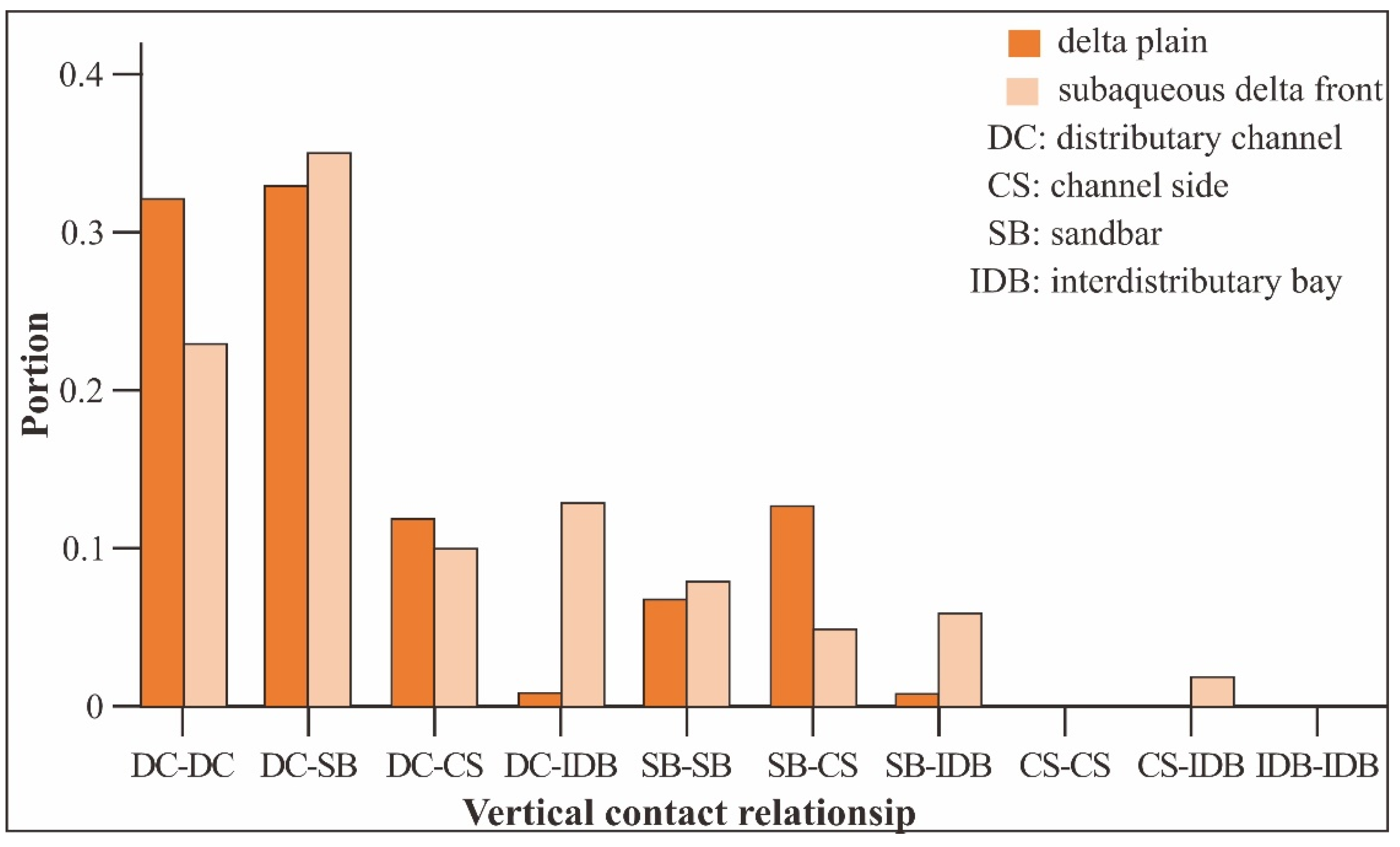
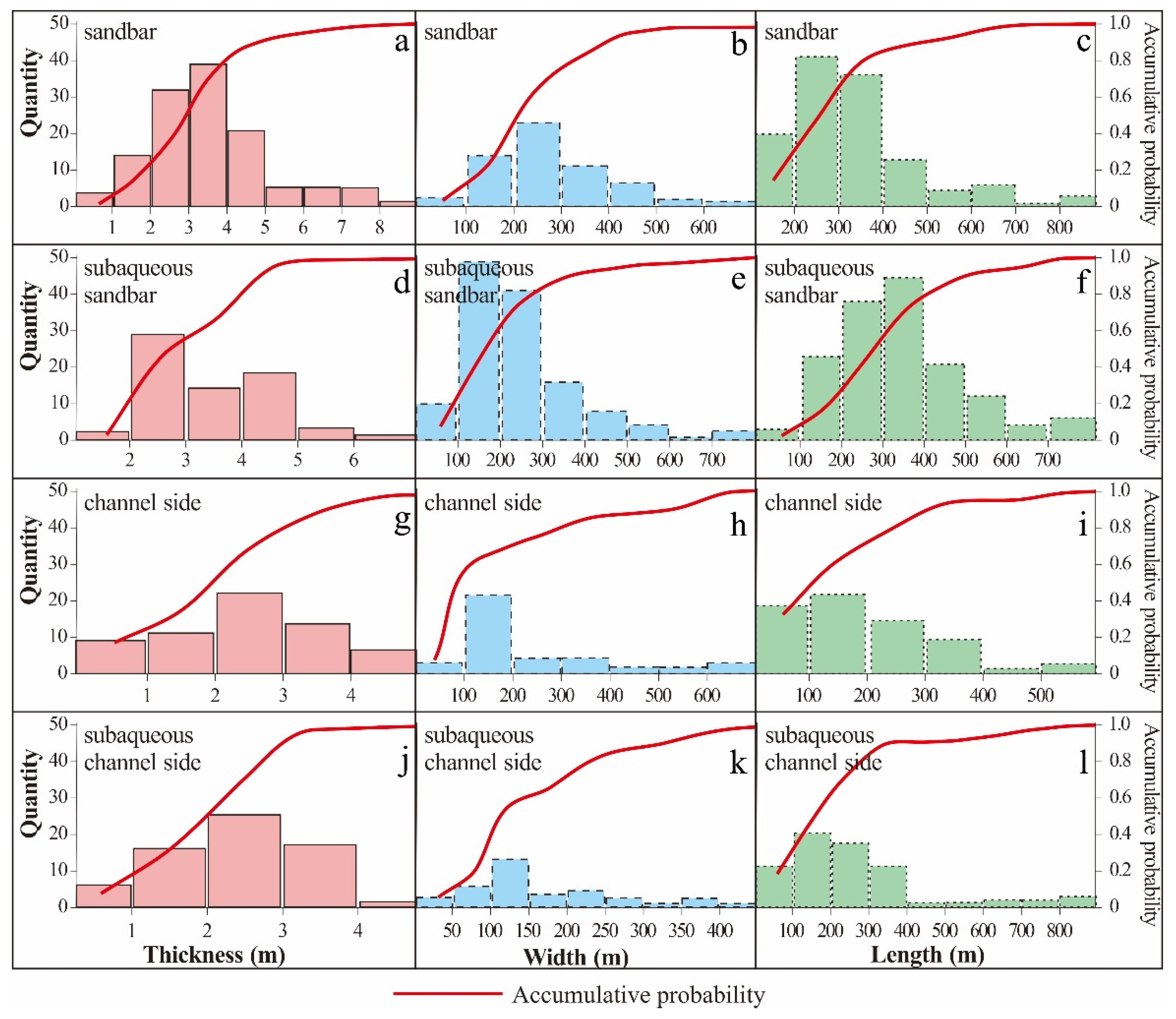



| No. | Shape | Length (m) | Width (m) |
|---|---|---|---|
| 01 | oval | 1364 | 676 |
| 02 | elongated | 1879 | 415 |
| 03 | Special shape: quadrilateral | 249 | 198 |
| 04 | Special shape: fan shape | 785 | 510 |
| 05 | oval | 197 | 95 |
| 06 | oval | 836 | 433 |
| 07 | Special shape: irregular | 500 | 177 |
| 08 | Special shape: fan shape | 433 | 246 |
| 09 | Special shape: quadrilateral | 430 | 240 |
| 010 | oval | 1078 | 370 |
| 011 | elongated cone | 873 | 523 |
| 012 | Special shape: quadrilateral | 556 | 533 |
| 013 | elongated cone | 489 | 269 |
| 014 | elongated cone | 483 | 198 |
| 015 | oval | 80 | 24 |
| 016 | Special shape: leaf shape | 86 | 21.4 |
| 017 | oval | 231 | 55 |
| 018 | elongated | 151 | 22 |
| 019 | elongated cone | 741 | 276 |
| 020 | elongated cone | 438 | 250 |
| 021 | elongated | 976 | 309 |
| 022 | elongated cone | 453 | 229 |
| 023 | elongated cone | 471 | 224 |
| 024 | elongated cone | 492 | 269 |
| 025 | elongated cone | 435 | 168 |
| No. | Shape | Length (m) | Width (m) | Thickness (m) |
|---|---|---|---|---|
| 1 | elongated cone | 672 | 321 | 8.1 |
| 2 | elongated cone | 516 | 263 | 7.44 |
| 3 | elongated cone | 381 | 230 | 4.86 |
| 4 | elongated cone | 423 | 209 | 5.56 |
| 5 | elongated cone | 500 | 272 | 7.15 |
| 6 | elongated cone | 429 | 231 | 6.8 |
| 7 | elongated cone | 428 | 207 | 8.86 |
| 8 | elongated cone | 428 | 209 | 5.92 |
| 9 | elongated cone | 536 | 330 | 7.92 |
| 10 | elongated cone | 731 | 361 | 8.7 |
| 11 | elongated cone | 611 | 269 | 8.38 |
| 12 | elongated cone | 780 | 307 | 10.42 |
| 13 | elongated cone | 540 | 254 | 8.32 |
| 14 | elongated cone | 492.75 | 238.5 | 5.28 |
| 15 | elongated cone | 425 | 329 | 9.5 |
| 16 | elongated cone | 565 | 287 | 5.06 |
| 17 | elongated cone | 465 | 267 | 8.22 |
| 18 | elongated cone | 517 | 258 | 6.2 |
| 19 | elongated cone | 503 | 315 | 8.22 |
| 20 | elongated cone | 482 | 252 | 4.96 |
| 21 | elongated cone | 427 | 248 | 8.52 |
| 22 | elongated cone | 329 | 212 | 7.44 |
| 23 | elongated cone | 780 | 407 | 10.42 |
| 24 | elongated cone | 540 | 354 | 8.32 |
| 25 | elongated cone | 659 | 392 | 9.28 |
| 26 | elongated cone | 515 | 396 | 10.96 |
| 27 | elongated cone | 641 | 459 | 12.18 |
| 28 | elongated cone | 662 | 297 | 10.34 |
| 29 | elongated cone | 578 | 383 | 11.05 |
| 30 | elongated cone | 499 | 343 | 10.06 |
| 31 | elongated cone | 573 | 357 | 10.92 |
| 32 | elongated cone | 694 | 421 | 13.32 |
| Sandbody Type | Shape | Width (m) | Thickness (m) |
|---|---|---|---|
| River mouth bar | convex lenticular (both top and bottom surfaces) | 11.2 | 1.5 |
| 18.2 | 2.1 | ||
| 16.9 | 1.4 | ||
| 22.4 | 2.1 | ||
| 16.8 | 1.82 | ||
| Subaqueous distributary channel | concave lenticular (bottom surface) | 7.6 | 1.4 |
| 22.4 | 2.8 | ||
| 16.1 | 2.1 | ||
| 7 | 0.9 | ||
| 8 | 1.2 | ||
| 19 | 2 | ||
| 23 | 4.5 | ||
| distributary channel | Top surface flat, bottom surface convex | 110 | 1.5 |
| 82 | 3.7 | ||
| 155 | 3 | ||
| 115 | 5.8 | ||
| 89 | 4 | ||
| 88 | 3.3 |
| Parameters | Setting | |
|---|---|---|
| Input | Thickness, contact code of YKL sandbodies | Original frequency distribution from well data |
| Length and width of modern sandbar | Statistics from real data and forms the relationships of the three dimensions of sandbodies | |
| Length, width, and thickness of analogue reservoir Block 1 | ||
| Thickness and width of outcrops | ||
| Output | Length and width of YKL sandbodies | |
| Number of runs | 1 × 106 | |
| Architectural Element | Lithofacies | Well Log Facies | ||
|---|---|---|---|---|
| Fan delta plain | Distributary channel | Fining upward | Low amplitude bell shaped/cylinder shaped |  |
| Sandbar | Coarsening upward | Funnel shaped |  | |
| Channel side | Interlayering of sandstones and mudstones | High amplitude cylinder shaped |  | |
| Interdistributary bay | Mudstone predominant, containing conglomerate or thin sandstone layers | Middle-high amplitude folk shaped |  | |
| Fan delta front | Subaqueous distributary channel | Fining upward (finer than distributary channel) | Low amplitude bell shape/cylinder shaped |  |
| Subaqueous sandbar | Coarsening upward (finer than distributary channel) | Funnel shaped |  | |
| Subaqueous channel side | Thin layers, interlayers of sandstones and mudstones | Middle-high funnel shaped |  | |
| Subaqueous interdistributary bay | Mudstone predominant, occasional sandstone seam | High amplitude fork shaped |  | |
| Vertical Contact Relationship | Accumulative Probability | ||
|---|---|---|---|
| P10 | P90 | P50 | |
| Continuous stacking | 0.33 | 0.58 | 0.45 |
| Erosional stacking | 0.29 | 0.48 | 0.43 |
| Intermittent stacking | 0.01 | 0.24 | 0.12 |
| Name | Count | Mean | Error | Convergence | |
|---|---|---|---|---|---|
| Sandbar | Length | 468,593 | 252 | 3.55 | converged |
| Width | 586,463 | 391 | 2.56 | converged | |
| Subaqueous sandbar | Length | 732,581 | 206 | 1.51 | converged |
| Width | 696,534 | 352 | 2.64 | converged | |
| Channel side | Length | 259,867 | 188 | 3.03 | converged |
| Width | 452,898 | 267 | 2.71 | converged | |
| Subaqueous channel side | Length | 554,396 | 145 | 2.89 | converged |
| Width | 359,122 | 229 | 3.62 | converged | |
Publisher’s Note: MDPI stays neutral with regard to jurisdictional claims in published maps and institutional affiliations. |
© 2022 by the authors. Licensee MDPI, Basel, Switzerland. This article is an open access article distributed under the terms and conditions of the Creative Commons Attribution (CC BY) license (https://creativecommons.org/licenses/by/4.0/).
Share and Cite
Chen, S.; Pan, L.; Wang, X.; Liang, H.; Dong, T. Efficient Simulation of Sandbody Architecture Using Probability Simulation—A Case Study in Cretaceous Condensate Gas Reservoir in Yakela Area, Tahe Oilfield, China. Energies 2022, 15, 5971. https://doi.org/10.3390/en15165971
Chen S, Pan L, Wang X, Liang H, Dong T. Efficient Simulation of Sandbody Architecture Using Probability Simulation—A Case Study in Cretaceous Condensate Gas Reservoir in Yakela Area, Tahe Oilfield, China. Energies. 2022; 15(16):5971. https://doi.org/10.3390/en15165971
Chicago/Turabian StyleChen, Shuyang, Lin Pan, Xiao Wang, Honggang Liang, and Tian Dong. 2022. "Efficient Simulation of Sandbody Architecture Using Probability Simulation—A Case Study in Cretaceous Condensate Gas Reservoir in Yakela Area, Tahe Oilfield, China" Energies 15, no. 16: 5971. https://doi.org/10.3390/en15165971
APA StyleChen, S., Pan, L., Wang, X., Liang, H., & Dong, T. (2022). Efficient Simulation of Sandbody Architecture Using Probability Simulation—A Case Study in Cretaceous Condensate Gas Reservoir in Yakela Area, Tahe Oilfield, China. Energies, 15(16), 5971. https://doi.org/10.3390/en15165971






